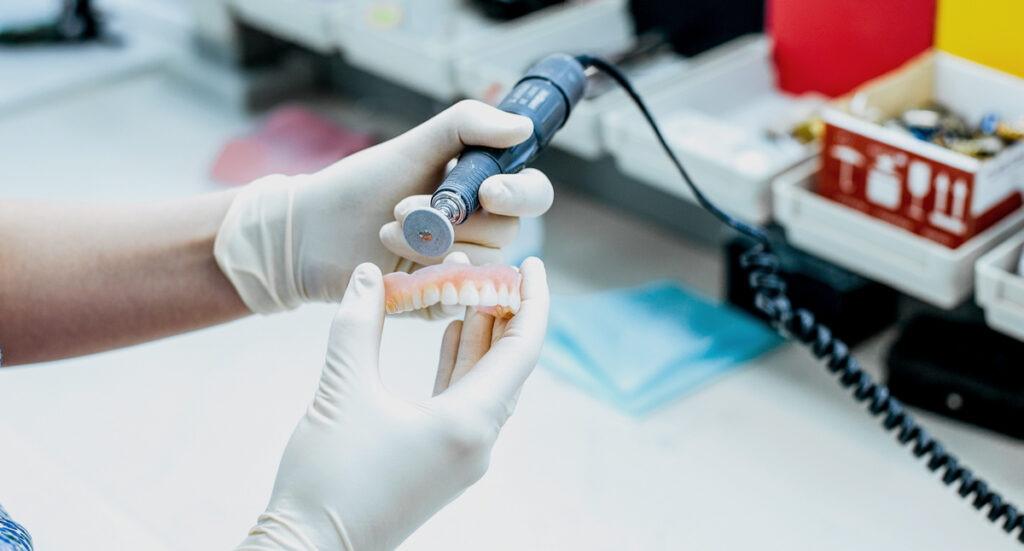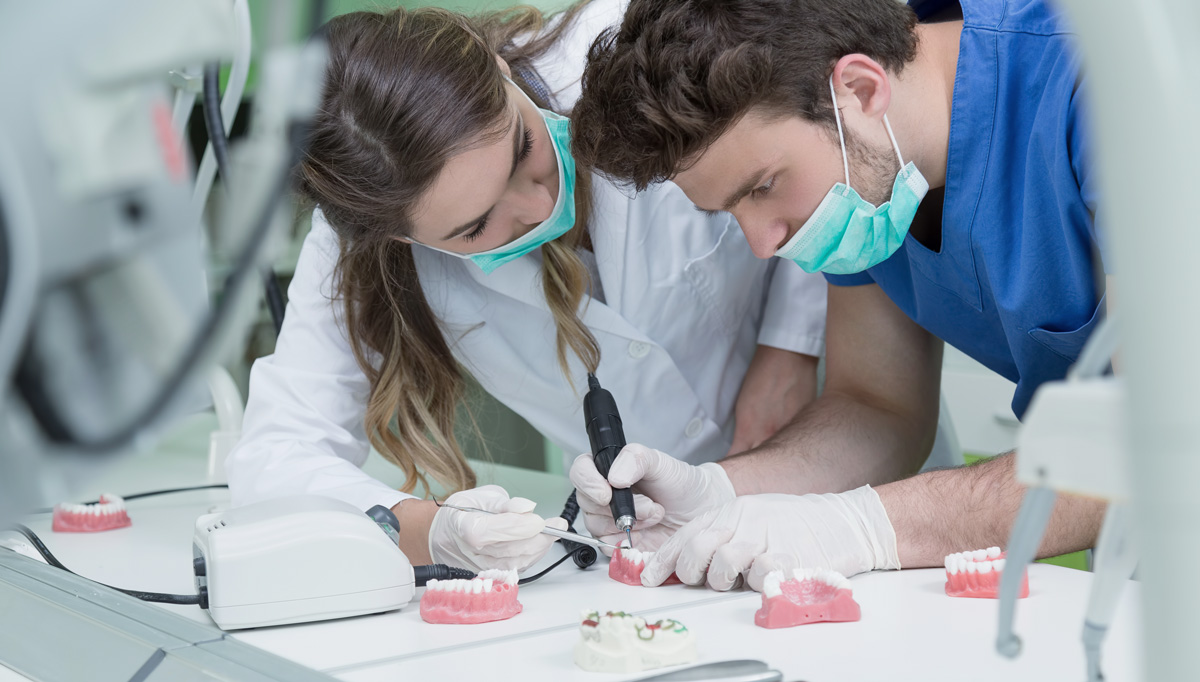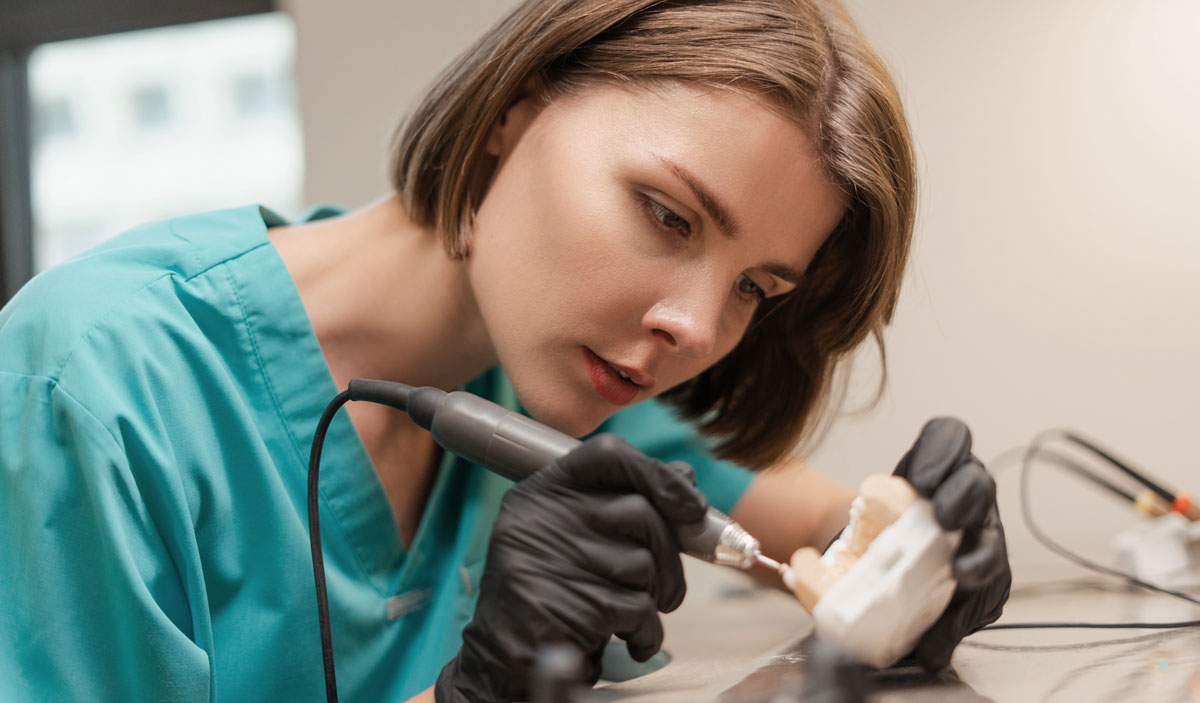Creating a smile that is both natural and perfectly suited to an individual requires more than just technical expertise. With patients increasingly looking for a dream smile that complements their unique facial features, cosmetic dentistry has embraced digital technology to deliver predictable results.
Digital smile design UK is at the forefront of this transformation, enabling dental professionals to offer advanced technology and efficient processes without needing every element completed in-house.
Outsourcing digital smile design services provides practices with new ways to scale, improve workflow, and give patients the confidence to proceed with treatments that promise a final result tailored to them.
The rise of digital smile design in cosmetic dentistry
Shifts in patient expectations for aesthetic outcomes
Patients are no longer satisfied with basic improvements; they want a new smile that enhances the overall appearance of the face and mouth. From veneers and dental implants to teeth whitening and trial smile procedures, the demand for cosmetic work has grown significantly in the UK.
Smile design analysis allows practices to propose changes that align with each patient’s vision while respecting their facial features, lips, and gums. Increasingly, patients want to feel that their proposed changes are not only cosmetic but are also in harmony with their personality and lifestyle.
This makes the first consultation a crucial step in building trust and ensuring that the treatment plan reflects realistic and achievable goals.
The move from analogue to fully digital workflows
Traditional methods relied on plaster models and manual mock-ups that often failed to represent the final outcome.
Now, digital dentistry uses advanced software, digital photography, and even video analysis to produce a digital blueprint of the future smile. This allows dental professionals to provide a visual representation of the proposed changes during the initial consultation and before treatment begins.
The shift to digital smile design DSD ensures predictable results and efficient collaboration across the team. With digital technology, dentists can also store, share, and adjust treatment plans easily, meaning patients can revisit their options if adjustments are needed before the next stage.
Why outsourcing digital smile design is gaining traction
Overcoming in-house resource limitations
Not every practice has the expertise or capacity to manage the entire digital smile design process internally.
Outsourcing allows practices to access digital smile design services without investing in additional staff or equipment. This makes it possible for smaller practices in areas such as London and beyond to compete with larger providers of cosmetic dentistry.
Outsourcing also creates a consistent standard of quality, as external providers often use advanced technology and refined workflows to deliver the same level of precision every time.
Access to specialist expertise and precision
Digital smile design involves advanced technology and requires a high level of skill. External specialists can create digital blueprints and mock-ups that provide a detailed representation of the final smile.
By outsourcing, practices ensure that every treatment plan is supported by a professional who understands the intricacies of facial features, existing teeth, missing teeth, and the overall balance of the mouth.
This access to expertise is particularly valuable for practices looking to offer treatments such as implants or veneers, but without the in-house capacity to design every detail themselves.
Efficiency gains for UK dental practices
Reducing turnaround times on treatment planning
When practices outsource, the process from first consultation to treatment can be shortened considerably. Digital smile design services enable the dentist to present patients with a proposed digital smile faster, giving them confidence to start treatment sooner.
Faster turnaround times are especially beneficial for patients undergoing significant changes, as they can make decisions more quickly and progress to their trial smile or mock-up with less waiting time.
Streamlining communication between dentist and technician
One of the benefits of outsourcing is improved communication. The dentist provides the digital photography, video analysis, and records of existing teeth, and the external designer creates the digital blueprint. This collaboration reduces errors and ensures the plan is consistent with the treatments involved, whether veneers, implants, or teeth whitening.
Clearer communication also minimises the need for repeated adjustments and increases the likelihood that the final outcome will match the patient’s expectations.
Cost-effectiveness of outsourced solutions
Minimising overheads compared to hiring in-house designers
Hiring an in-house smile design expert requires significant investment in training, advanced software, and equipment. Outsourcing digital smile design reduces these costs, as practices only pay for the digital smile design services they use.
This makes the procedure more financially viable for many practices, particularly in competitive markets where affordability influences patient choices.
Pay-as-you-go flexibility for practices of all sizes
Whether a practice is completing one smile makeover per month or dozens, outsourcing provides flexibility.
Dental professionals can scale cosmetic dentistry without committing to permanent overheads, ensuring that the combination of cost and outcome is favourable for both patients and the practice.
For new practices, this flexibility is particularly useful, as it allows them to test different workflows and treatments involved before investing in in-house digital dentistry resources.
Enhancing treatment planning and predictability
Digital simulations for greater accuracy
Digital smile design allows a dentist to show patients a digital smile that reflects proposed changes before any procedure. The mock-up is an essential first step in providing confidence, particularly when significant changes are being considered.
The use of advanced software ensures that each digital blueprint can be adjusted to account for the patient’s facial features, creating a proposed new smile that feels perfectly suited to the individual.
Increasing patient confidence through visual previews
By offering a visual representation of the final outcome, dental professionals give patients reassurance that the treatments involved will lead to a perfect smile. This digital preview enables adjustments to be made before the next stage, ensuring patients are completely happy before the procedure.
For some patients, seeing their proposed changes in a visual format helps them overcome doubts or fears about committing to cosmetic work, making the overall consultation process more effective.

Integrating outsourced smile design with existing workflows
Compatibility with leading CAD/CAM systems
Digital smile design services are designed to integrate with advanced software and CAD/CAM systems already in use in many UK practices. Whether producing veneers, implants, or trial smiles, the outsourced digital blueprint works seamlessly with dental laboratory processes to create predictable results.
Compatibility also means that once the treatment plan is agreed upon, the practice can move smoothly from design to procedure without unnecessary delays.
Balancing outsourced design with in-practice technology
Outsourcing does not mean abandoning in-practice digital technology. Instead, it allows practices to combine their cutting-edge technology with external expertise.
This balance ensures that treatments such as teeth whitening or dental implants align with the digital blueprint and contribute to the perfect smile.
By combining resources, dental professionals can create a comprehensive process where both the outsourced designer and the in-practice team contribute to the end result.
Training and skill development for dental teams
Upskilling staff to collaborate effectively with outsourced designers
Dental professionals must understand the digital smile design process to communicate effectively with external providers. Training ensures that staff know how to capture digital photography, conduct video analysis, and convey accurate information about the patient’s existing teeth, lips, and gums.
By gaining familiarity with the advanced software involved, team members become more confident in explaining the steps to patients during the first consultation.
Continuous professional development in digital dentistry
As digital dentistry evolves, ongoing training in advanced technology and smile design ensures that the team stays up to date. This not only improves the quality of communication but also enhances the ability of the practice to deliver a final result that reflects the patient’s future smile accurately.
Over time, this commitment to professional development enhances the reputation of the practice, making it a trusted destination for cosmetic dentistry.
Compliance, data security, and UK regulations
GDPR and patient data protection in digital workflows
When outsourcing digital smile design, compliance with GDPR is essential. Digital photography, video analysis, and patient records form part of the process, so secure communication between the dentist, the practice, and the design team must be guaranteed.
Practices must also ensure patients are informed of how their data will be used, which builds trust and transparency throughout the process.
Choosing UK-based or compliant international providers
Practices need to ensure that outsourced providers of digital smile design services comply with UK regulations. Whether working with a UK-based company or an international provider, safeguarding patient data and ensuring ethical practice are non-negotiable.
Clear agreements on storage, sharing, and retention of records are part of ensuring that the treatment plan not only delivers a perfect smile but also respects the patient’s rights.
Scaling opportunities for cosmetic dentistry practices
Expanding service offerings without expanding physical space
With outsourced digital smile design, practices can expand cosmetic dentistry services such as veneers, implants, and smile makeovers without needing larger premises.
The digital blueprint provides a clear treatment plan that can be executed efficiently, allowing more patients to achieve their perfect smile.
This creates growth opportunities even for small practices where space is limited, enabling them to offer advanced cosmetic work without significant infrastructure changes.
Meeting rising demand for cosmetic treatments across the UK
From nervous patients seeking reassurance to those requesting advanced cosmetic work, demand for digital smile design services continues to grow. Outsourcing enables practices to keep pace with this demand, offering smile makeovers that include trial smiles, test drives, and predictable results.
The ability to create a process that combines advanced technology with external expertise positions practices to attract more patients seeking confidence in their overall appearance.
The future of outsourced digital smile design in the UK
Innovations in AI and automation for dental design
Advanced technology and software are driving the next stage of digital smile design DSD. AI-powered smile design analysis will allow dental professionals to create proposed changes even faster, providing a future smile with improved accuracy and efficiency.
This innovation means that patients can see their final smile sooner, which makes the first step towards cosmetic treatment less daunting.
Long-term competitive advantages for early adopters
Practices that adopt outsourcing early will gain significant advantages. They can offer cutting-edge technology, improved communication, and efficient workflows that result in patients being completely happy with their final smile.
By integrating digital smile design services with existing dentistry procedures, UK practices position themselves at the forefront of cosmetic dentistry and ensure predictable results for every patient.
Smile design from GoDigital Dental
At GoDigital Dental, we believe that every patient deserves the opportunity to see and feel their future smile before any treatment begins. Our digital smile design service makes this possible by combining digital impressions, advanced CAD software, and a wide choice of tooth libraries to create a personalised virtual preview. This ensures that both dentists and patients can move forward with confidence, knowing that the treatment plan is accurate, predictable, and truly tailored.
By working closely with dental teams and involving patients in the selection of tooth shapes, styles, and materials, we make it simple to adjust designs until the desired result is achieved. This process not only builds trust but also increases treatment acceptance by giving patients a clear vision of their new smile.
When you partner with GoDigital Dental, you access a process built on precision, artistry, and predictability. From the first consultation through to the final smile, our services support dental professionals in delivering bespoke, natural outcomes that patients are completely happy with.
How accurate are digital smile design previews compared to the final results?
Digital smile design previews are very accurate and give patients a clear idea of how their new smile will look. Using digital photography, advanced software, and detailed analysis of facial features, dentists can create a digital blueprint that closely matches the final outcome.
While the preview is a realistic guide, small adjustments may still be needed once treatment begins, as every mouth and set of teeth responds differently. The benefit of a digital preview is that it reduces uncertainty, allows for proposed changes before procedures start, and ensures that the final smile is as close as possible to the agreed design.
What technologies are used in digital smile design?
Digital smile design uses a combination of advanced tools to create accurate previews of a patient’s future smile. Dentists often begin with digital photography and video analysis to capture the patient’s mouth, lips, gums, and facial features in detail. Intraoral scanners are used to take digital impressions of the existing teeth, replacing traditional moulds.
These images and scans are then processed with advanced software that allows the dentist to design and adjust the proposed new smile. CAD/CAM systems may also be used to produce trial smiles. Together, these technologies provide a clear and predictable digital blueprint for the final result.
Is digital smile design used for cosmetic cases only, or also restorative dentistry?
Digital smile design is not just for cosmetic cases like veneers, teeth whitening, or smile makeovers. It is also very helpful in restorative dentistry. Dentists use it to plan treatments for missing teeth, dental implants, or damaged teeth.
By creating a digital blueprint, they can design a new smile that looks natural while restoring how the mouth works. The technology helps dentists see how proposed changes will fit with existing teeth, lips, and facial features.
It also allows patients to preview their future smile before treatment begins, giving confidence and ensuring the final result is both functional and aesthetically pleasing.
Are there risks or downsides to digital smile design?
Digital smile design is a safe and non-invasive process, with very few risks. It mainly involves digital photography, video analysis, and computer software to create a visual preview of the proposed new smile. There are no physical procedures at this stage, so it does not harm the teeth, gums, or mouth.
The main limitation is that the preview is an estimate, and small adjustments may be needed once treatment begins, as each patient’s teeth and mouth respond differently. However, these differences are usually minor, and the process helps reduce uncertainty, making treatments more predictable and giving patients confidence in their final smile.
How long does digital smile design take?
The time needed for digital smile design can vary depending on the complexity of the case. A simple smile makeover or teeth whitening plan may take a single appointment of about 30 to 60 minutes for the first consultation, digital photography, and facial analysis.
More complex cases, such as planning veneers, dental implants, or full smile makeovers, may require additional time to take digital impressions, perform video analysis, and create a digital blueprint. After these steps, the dentist can review the proposed changes with the patient. Overall, the process is efficient, and most patients can see a realistic preview of their future smile within a few days.
What are the benefits of digital smile design for patients?
Digital smile design offers many benefits for patients. It allows you to see a realistic preview of your new smile before any treatment begins, giving confidence and reducing anxiety. You can take part in the design process, choosing tooth shapes, colours, and styles that suit your facial features and overall appearance.
It helps ensure predictable results, as dentists can plan treatments accurately using digital photography, video analysis, and advanced software. The process can be used for cosmetic work, such as veneers and teeth whitening, as well as restorative dentistry like implants or crowns.
Can I ask for changes to be made during the digital smile design process?
Yes, one of the main benefits of digital smile design is that it allows you to request changes before any treatment begins. During the first consultation, the dentist will take digital photographs, scans, and video analysis to create a digital blueprint of your proposed new smile.
You can review this preview and suggest adjustments to tooth shape, colour, size, or alignment to ensure it suits your facial features and overall appearance. The process is flexible, and trial smiles can be created to test proposed changes. This ensures you are completely happy with the design before treatment starts.
How does digital smile design compare to traditional dental planning methods?
Digital smile design is more precise and visual than traditional planning methods. In the past, dentists used plaster models and manual mock-ups, which could not fully show the final smile. With digital technology, dentists can take photographs, scans, and video analysis to create a detailed digital blueprint. This allows patients to see a realistic preview of their new smile before any treatment begins.
Changes can be made easily, improving communication and confidence. Digital smile design also helps plan complex treatments like veneers, implants, or teeth whitening more accurately. Overall, it provides more predictable results, a clearer process, and a smoother experience for patients.
Will a new smile that’s been digitally designed look natural?
Yes, a digitally designed smile is created to look natural and perfectly suited to your facial features. Using digital photography, video analysis, and advanced software, dentists can plan how the teeth, gums, and lips will work together to create a balanced and harmonious appearance.
The digital blueprint allows for adjustments to tooth shape, size, colour, and alignment so that the final smile fits your face and overall look. Temporary smiles can also be created to test the design before treatment begins. This ensures the final result looks realistic, enhances your confidence, and feels completely natural.
How do dentists collaborate with labs during the digital smile design process?
During digital smile design, dentists work closely with dental laboratories to plan the patient’s new smile. The dentist provides digital photography, scans of existing teeth, and video analysis, along with detailed information about tooth shape, colour, and alignment. The lab uses advanced software and CAD/CAM technology to create a digital blueprint that guides the restorative work, including veneers, crowns, or implants.
Regular communication ensures that the proposed changes are accurately followed and that the treatments involved will achieve the desired final result. This collaboration helps deliver predictable, natural-looking outcomes and ensures the patient’s smile is perfectly suited to their facial features.



